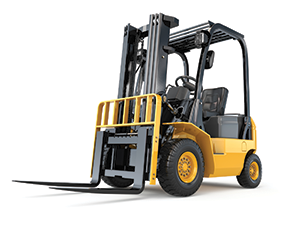OSHA accepting comments regarding powered industrial trucks standard update

|
The Occupational Safety and Health Administration is accepting written comments regarding its Powered Industrial Trucks Design Standard Update. OSHA proposes an update to the design and construction requirements of the powered industrial trucks standards for construction and general industry. OSHA would incorporate by reference the applicable parts of the current versions of consensus and national industry standards from the American National Standards Institute relevant to the design and construction of powered industrial trucks. Any provisions in OSHA’s powered industrial truck standards that do not relate to design or construction will continue to reference only the 1969 edition of ANSI B56.1, “Safety Standard for Powered Industrial Trucks,”—including operator requirements for stability, inspection, testing, maintenance and operation—and would not be amended in the proposal.
OSHA has not updated its forklift standards since it adopted the 1969 version of the ANSI B56.1 standard in 1971. Since then, ANSI has revised the B56.1 standard 12 times, and beginning in 1978, it narrowed the scope of the standard from covering powered industrial trucks generally to only covering low- and high-lift trucks. Additional ANSI standards were subsequently created, including B56.5—2019, “Safety Standard for Driverless, Automatic Guided Industrial Vehicles and Automated Functions of Manned Industrial Vehicles,” and ANSI B56.6—2021, “Safety Standard for Rough Terrain Forklift Trucks.” OSHA’s proposed rule would update the references in the general industry and construction standards to recognize the design and construction requirements in the latest editions of ANSI standards B56.1, B56.5 and B56.6.
For all powered industrial trucks manufactured on or after the final rule’s effective date, the proposed rule would require this equipment meet the design and construction requirements established in the applicable ANSI B56 consensus standard. For powered industrial trucks manufactured before the final rule’s effective date, OSHA would maintain the existing reference to ANSI B56.1-1969, grand-fathering that equipment under the original 1969 ANSI B56.1 standard.
OSHA is accepting written comments about the proposed rulemaking at federalregister.gov until May 17.
DOL to add 100 Wage and Hour Division investigators

|
The Department of Labor will add 100 investigators to support its Wage and Hour Division, according to constructiondive.com.
Investigators will conduct investigations to ensure workers are receiving their full wages, promote compliance through outreach and public education programs, and help combat worker retaliation and the misclassification of workers as independent contractors.
“Adding 100 investigators to our team is an important step in the right direction,” said Acting Wage and Hour Administrator Jessica Looman in the agency’s press release. “We anticipate significantly more hiring activity later in fiscal year 2022.”
The move highlights DOL’s increased focus on employers’ violations of wage and hour laws and aligns with the Biden administration’s interest in workers’ rights.
Wage theft is the denial of an employee’s rightly owed wages or benefits and has been a significant labor violation for years. Common violations include failure to pay overtime; failure to abide by the local, state or federal minimum wage laws; tip theft; failure to allow breaks; and failure to allow unpaid, job-protected leave following childbirth or for a medical condition as required by the Family and Medical Leave Act.
DOL’s Wage and Hour Division reportedly recovered $257.8 million in back wages for workers in fiscal year 2020; $322.5 million in fiscal year 2019; $304.9 million in fiscal year 2018; and $270.4 million in fiscal year 2017. More than 1 million workers received recovered wages during this time period, with an average of more than $1,000 per worker.
Essential workers and immigrant workers are particularly vulnerable to wage theft. DOL’s analysis of low-wage, high-violation industries for 2021 shows the food services, construction and retail industries lead in cases.
DOL also is taking strong action regarding worker misclassification, which some employers considered using as a strategy in anticipation of the Occupational Safety and Health Administration’s nationwide vaccine mandate for employers; the U.S. Supreme Court has since stayed the mandate.



